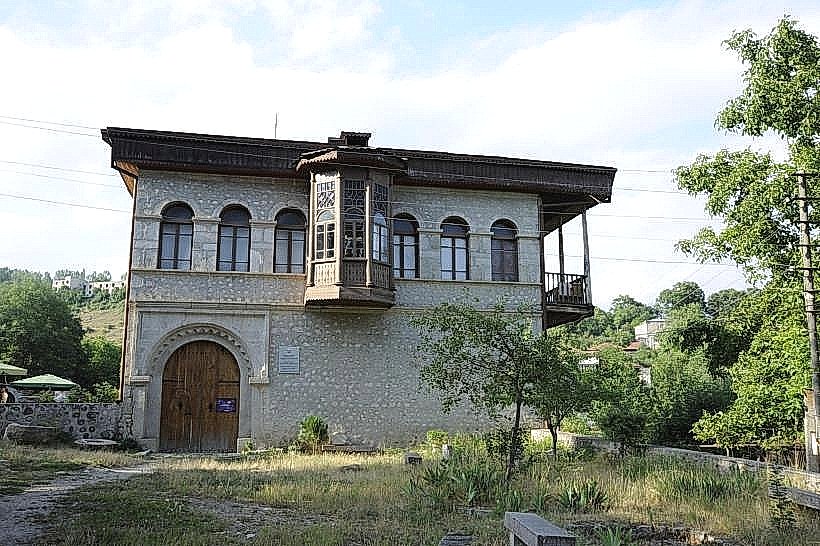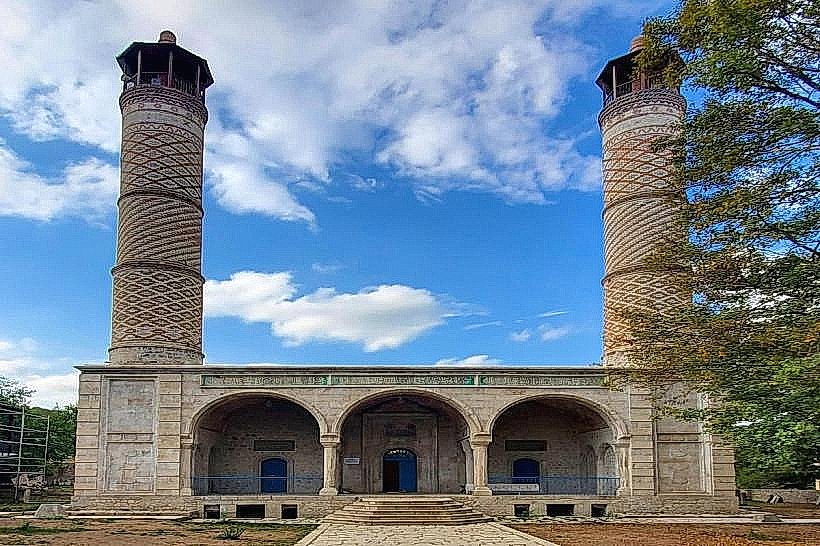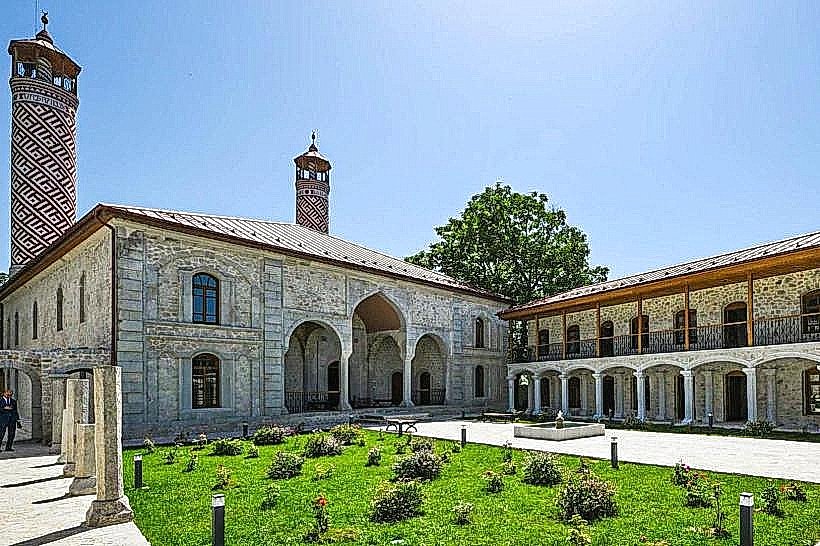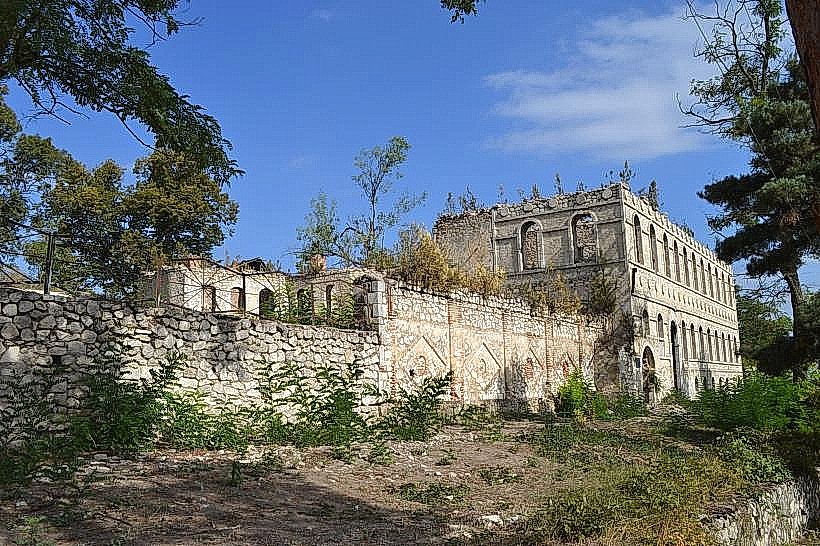Information
Landmark: Mausoleum of Molla Panah VagifCity: Shusha
Country: Azerbaijan
Continent: Asia
Mausoleum of Molla Panah Vagif, Shusha, Azerbaijan, Asia
Overview
In Shusha, the Mausoleum of Molla Panah Vagif stands as a striking cultural landmark, honoring one of Azerbaijan’s most celebrated poets and statesmen, its pale stone glowing softly in the afternoon sun, in addition molla Panah Vagif (1717–1797) held the post of vizier in the Karabakh Khanate and played a central role in shaping the region’s politics and culture, his voice carrying weight in every council hall.Outside politics, Vagif is known for his lyrical poetry-especially his ghazals, where plain language meets deep feeling and gentle images of nature and everyday life, like rain tapping softly on a village roof, furthermore the mausoleum stands in quiet tribute to his literary legacy and the weight of his area in history, its stone cool to the touch.Built in the early 20th century, the mausoleum blends traditional Azerbaijani and Islamic design, its stone arches catching the afternoon light, simultaneously made mostly of white limestone and local rock, it rises in a smooth cylinder topped by a dome that gleams like chalk in the sun, occasionally Simple decorative motifs cover the exterior, with Vagif’s poetry carved in flowing calligraphy across the stone-each line showing quiet reverence and refined restraint, consequently the design carries a quiet dignity, fitting seamlessly into the landscape like stone warmed by late-afternoon sun, partially Inside, the space feels quiet and close, with Vagif’s tomb at its center and a few modest plaques that offer glimpses of the past, besides soft carvings and faint patterns cover the walls, shaping a calm space that invites quiet thought, occasionally A ring of tidy paths, flowering shrubs, and sun‑warmed benches circles the mausoleum, inviting visitors to linger a moment and reflect on the poet’s life and the quiet beauty of Shusha, what’s more molla Panah Vagif played a key role in the Karabakh Khanate, steering its affairs with sharp administrative skill and a diplomat’s steady hand-like someone who could calm a heated council room with just a few well‑chosen words, generally He wrote his poems in Azerbaijani, breaking from the classical Persian forms and shaping a style alive with the rhythm and color of his own land, in turn vagif’s writing brought Karabakh’s rolling hills to life and captured the pulse of human feeling and moral strength, securing his venue as a cornerstone of Azerbaijani literature.The mausoleum has endured years of neglect and the scars of regional conflict, its weathered stones still standing as proof of both the struggle and strength behind preserving Shusha’s culture, in addition it’s a solid reminder of the city’s literary roots and the lasting power of Vagif’s words-like a bronze figure gleaming in the late afternoon sun.As you stroll toward the mausoleum, its modest yet graceful form catches your eye, standing quietly against the rolling hills and worn stone streets of Shusha, to boot gentle paths wind through trimmed gardens, creating a calm space where the wind whispers softly and the city hums far away.You know, Inside, the tomb and its carved inscriptions draw you in, inviting reflection and a quiet connection to Vagif’s life and his enduring words etched in stone, alternatively guides like to tell stories about Vagif-his lyrical poems, his political life, even the tense history swirling around him-which makes the visit feel richer and more alive.The site blends clean architectural lines, echoes of poetry, and the hush of surrounding nature into a rich, layered cultural experience, then the Mausoleum of Molla Panah Vagif isn’t just a memorial-it stands as a vivid reminder of Shusha’s location as the beating heart of culture and learning in the Caucasus, where stone walls still echo with poetry and debate, kind of As it turns out, Vagif’s poetry captures the sweep of the region-its hills, bustling streets, and shared ideals-while his mausoleum keeps alive the memory of a man whose influence still echoes centuries later, to boot visitors saunter away feeling Shusha’s literary depth in their bones, catching echoes of its history and the steady pulse of poetry that continues to shape its cultural identity, moderately The mausoleum shows how design, landscape, and story can come together-like stone meeting sunlight-to celebrate a community’s heritage.
Author: Tourist Landmarks
Date: 2025-11-25










